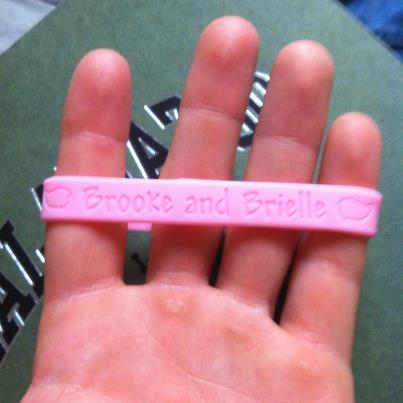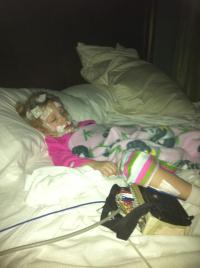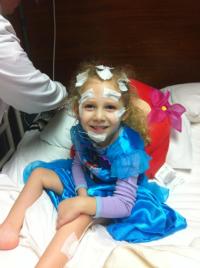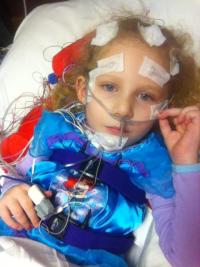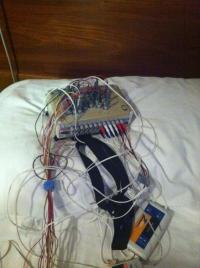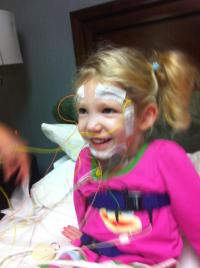The new year means new sleep study
 Saturday, January 12, 2013 at 12:23PM |
Saturday, January 12, 2013 at 12:23PM |  Sarah
Sarah
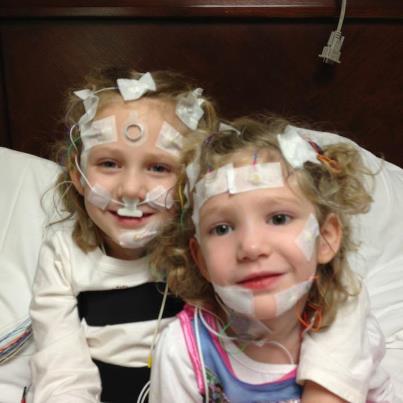
We started out the new year with a sleep study. The girls had to sleep in different rooms but after they got all hooked up with wires, Brooke’s nurse let her go into Brielle’s room to so they could see what the other one looked like.
They both looked at eachother and said, “you look funny!”
They both slept pretty good and the nurses both said they got all the info they needed to give to the doctor for his review! Whew!! We should get the results back in about 2 weeks.
“A sleep study may help to determine whether or not there is an obstructive component (due to low muscle tone or enlarged tonsils or adenoids), or whether nocturnal hypoventilation (shallow-breathing resulting in low oxygen levels or increased carbon dioxide levels) is present. BiPAP is often recommended for use only at night, but can be invaluable to use for longer periods of time when an upper respiratory infection or other illness results in increased work of breathing and fatigue.
Children with SMA Type I, and some children with Type II, have very weak breathing during sleep, with short and shallow breaths, and poor oxygen and carbon dioxide exchange (hypoventilation). When this happens, the child has too little oxygen and too much carbon dioxide in the body.
When oxygen levels are too low and carbon dioxide levels are too high, the body cannot function normally. To prevent hypoventilation, some children need mechanical breathing support while they are sleeping to help them rest their breathing muscles. If they become sick with a cold or flu, they may need this support even while awake.
With improvements in oxygen exchange and better sleeping, children with hypoventilation may have less nighttime sweating, fewer headaches, better appetites and weight gain, and better concentration.
There are 3 ways to help children with SMA breathe while sleeping. These include
use of BiPAP, mechanical ventilation, and negative pressure ventilation (NPV).” -FSMA.org
 Sleep Study
Sleep Study 






